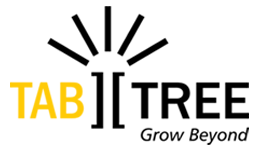Do you know?
A shocking 50% of security threats are estimated to come from inside a company.
Security is at the top of everyone’s agenda. Meanwhile, in this world of endless data penetration, security threats are also advanced and persistent. Increasing Data breaches have created an alarming situation, leaving organizations with no option but to protect and secure their confidential data. Business owners have to be constantly on their guard, for it only takes one slip-up for the attackers to infiltrate the network and rob the riches.
So identifying and securing vulnerable data will be a tricky task for any organization. Incorporating some new technologies can also be a gateway for security holes or data breaches in an organization’s IT infrastructure. Hence it is an obvious need to realize, track and identify the security loopholes and to address them immediately. Understanding, where the threats are and who the most likely perpetrators are, is a good start to mitigate the issue.
The most basic is an unlawful interruption into the corporate system and gaining access to their private data. Hackers/Attackers are skilled at adapting to new defenses despite their intention on money or databases. Thus, cyber-attacks brim to be a major problem for data security and it’s time for enterprises to take a proactive stance on this.
External Sources of threat include various types of malware, spyware, viruses, worms, Keyloggers, Trojans or any type of malicious code, can also infiltrate your network and ruin your business.
As enterprises become larger, managing employee behavior and defining their access limits becomes harder. This intensifies the risk of a data breach within an organization. Thus a ticking time bomb to any enterprise security is the insider threat.
The insider threat can be of the either type:
- Negligent insiders- employees who accidentally expose data.
As per reports, 58 % employees lack understanding of what might actually constitute a security threat from within their organization. These attitudes urge organizations to train employees in security protocols and policies a priority area for the safety and security of the business.
- Malicious Insiders- employees who intentionally expose data.
The main motivation behind this would be the financial gain(by selling the stolen data to the competitor or directly competing with their former employer). Hope this may not surprise you, 50 percent admit that they disregard security policies at work in order to get their job done.
- Compromised Insiders- Insiders whose access credentials or computer have been compromised by an outside attacker.
Research also indicates that insider threats typically conduct their attacks within 30 days of giving their resignation/ termination.
Security professionals believe that the boards are not aware of the severity of internal security issues and are still not treated with the same level of importance as external threats by the enterprises.
So, be proactive, perform audits and penetration tests to find and close security gaps before they can threaten your business. Closing loopholes before damage is vital which involves a great effort from end-user education, and best practices like workstation protection to firewalls and system-wide antivirus protection.
Enterprise security is a continuous and round the clock job that demands the latest technology and policies. It’s an arms race that advances every day. Once you understand the risk, it will be easy to track and secure the sensitive data. To stay ahead of the threats it’s essential to implement a long-term security infrastructure and to work with expert consultants who can bring in the right tools and intelligence, and a consistently fresh perspective on security.
“Threat – It’s not about the 98% you catch, but about the 2% you miss”.




